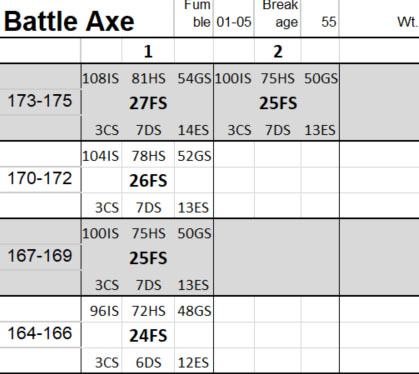I’ve never really warmed to Rolemaster’s archetypal blaster, the Magician. In the spirit of full disclosure, I should add that I’ve never liked any character that concentrates primarily on ‘blasting’, in any system, unless the blasting is interesting, like firing a swarm of wasps or an ethereal bolt that causes the target to blink in and out of their current dimension. My problem with the Magician, however, is more specific: at the risk of sounding pompous, I feel that the Magician does violence to the richness and potential of the elements. One of the things I really liked about the Elemental Companion was the wide and fascinating range of elemental effects available to players (although the generic nature of the lists represented, I felt, an opportunity lost).
The thing with the elements is that they provide a window to a whole system of symbolism, psychology and metaphysics. I find myself thinking here of crossovers between the classical elements and astrology, elements and humoral theory, elements and cosmology (as per Thales, for example). If one accepts the idea of elements as metaphysical building blocks of varying complexity, and adds to that the notion that a certain level of mastery of a particular element in its raw form grants access to more ‘metaphysical’ expressions of that elements sphere of influence, then you can move beyond bolts, balls and walls to…anywhere, really.
So, what elements to use? Rolemaster has traditionally concentrated on the classical four elements with Ice and Light thrown in (more bolts and balls!). My own campaign’s take on this is that the classical four plus four others are the starting point and the basis of all further elaboration. The four other key elements form two dichotomies: one represents that between Law and Chaos, Order and Entropy, whilst the others could be represented by Death and Life, Good and Evil, Void and Being or Negative and Positive. There are also several anomalous ‘elements’ or forces that stand somewhat outside of these eight fundamentals. Here are contained such conceptual forces as Time, Mind, Dream and the binding/linking force of the Ether.

All of these elements are sourced from their own plane, a dimensional zone where they reign supreme, and each of these dimensions, whirling in the intricate and infinite geometries of the multiverse ‘rub’ against one another, producing small hybrid dimensions I call ‘niches’. Fire and Water, for example, create the Niche of Steam. The list of potential combinations is fairly large, especially given that each Niche can then contact each other, spawning ever more complex creations. The Niche of Wood is created by the intersection of Life, Earth, Water and Light (itself a product of Fire and Ether). When this Niche is then contacted by that of Decay (Time and Chaos), the Niche of Rot comes into being.
This is the general structure, but it has comparatively little bearing on the standard RM organisation of spell lists, which may be considered to operate at a level that does not require much knowledge or application of the underlying metaphysics. It is only when planar travel and specific summoning (“By all that is holy! This situation calls for a Rot Elemental!”) are required does this lore become a necessity, and only a few sages (and my updated version of RoCo IV’s Astral Traveller) are privy to it.
Back to the Magician: if the elements are as complex and fundamental as the above model assumes, then Magicians, as the primary manipulators of basic elemental matter, ought conceivably to have a command of both the aggressive/defensive manifestations of the elements but also the more metaphysical aspects of the elements. This degree and style of learning requires that Magicians have ‘primary’ access to one – and one only – element, in which they can potentially master all the power an element provides. Thus a magician might specialise in Fire: they gain lists that manipulate the transcendent aspects of Fire (the chosen list here is Fire Law) and the immanent aspects. I used the list Fire Forms from RoCo VII and the list Fire’s Influence from the January 2009 Guild Companion. So that’s three of six Base Lists. I also gave them Elemental Summons (RoCo II), with the proviso that only Fire Elementals could be summoned using the list. Fire Magicians also gain a ‘metaphysical’ list linked to the element: I selected the Paladin list Inspirations (RoCo II) to represent the courage and inspiration that Fire grants. Finally, I gave the list Mage Sign (RoCo VII) to all Magician’s regardless of elemental selection, to reflect a basic training that all Magicians receive.
I did retain the six elements of the original Magician and added ‘Dark’ as a seventh – more because I wanted to draw on the existing material in the Core and Companions rather than spending the rest of my life concocting spell lists for all of the basic elements and the Niches. One of these days, I’d like to give the system my full attention and create a set of lists that appropriately reflects the juiciness of the underlying concept (without following the rather generic path of the Elemental Companion).







